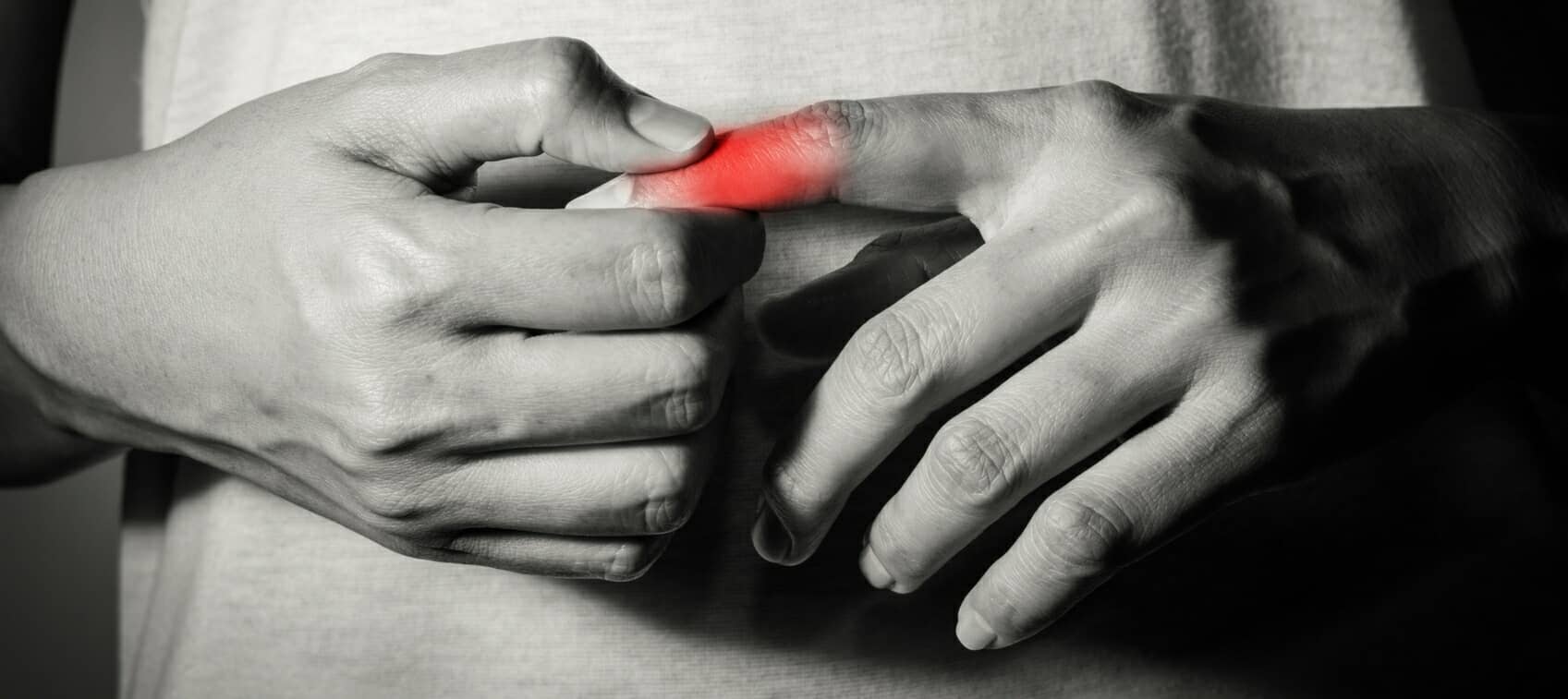
Your microbiome is made up of specialized microbes in each part of your body, and they all play a different role in your health. Whether it’s your skin, your stomach, or your oral cavity—bacteria are flourishing everywhere. That’s why, when people develop health issues, it’s important to ask this question: where is the source of the problem? A lot of people try to treat themselves without the answer, allowing the problem to recur. An unhealthy gut is an issue that can cause an explosion of “unrelated” health dilemmas, but thankfully, there’s ways to solve them. Once you make the connection, you can get started on the healing process.
Your Gut Health is About More Than Your Gut
You may be wondering what gut health has to do with anything other than the gut. Here are a few health matters that are surprisingly influenced by gut health:
- Mood
You know that gut bacteria and mood are related because a lot of times you can actually feel an emotion in your gut along with your brain. An example would be the “butterflies” you feel in your stomach when you are excited. This connection goes both ways. Your brain can influence your gut, and vice versa. So when gut isn’t balanced, your brain won’t be either. Issues can cause mood abnormalities such as depression, anxiety, and anger.
- Weight
Believe it or not, gut bacteria and weight gain can go hand-in-hand. The bacteria in your stomach can chemically alter the nerve signals that the brain uses to monitor activity in the gut. By releasing certain chemicals, they can change taste receptors, inducing cravings and making us prefer one food over another. A healthy gut can often ease the already difficult task of making healthy diet choices.
- Immunity
A very well-known connection between digestive health and the rest of your body is the strength of your immune system. This happens in a number of ways, but generally is the result of our microflora’s ability to prevent pathogenic organisms from taking hold in our bodies. A healthy microbiome means your body can defend against bad bacteria as well as create an undesirable environment for bad bacteria to flourish.
- Urinary & Vaginal Health
Like in the colon, good and bad bacteria are constantly battling for places to settle in the vagina and urinary tract. The good bacteria need to defeat the bad bacteria as well as keep the pH levels of the vagina and urinary tract slightly acidic. Maintaining a healthy, balanced microbiome with a slightly acidic pH level is a crucial tool in keeping yeast and other bad bacteria from thriving. Otherwise, you will find yourself burdened with either the infamous yeast infection or urinary tract infection (UTI).
What is Gut Inflammation?
One of the most common digestive health issues is inflammation and irritation of the intestinal lining, which can cause a myriad of health issues. There are many possible causes of gut inflammation. This includes:
- An imbalance in gut bacteria
- A diet high in carbohydrates (sugars, white flour, refined grain products, etc.)
- A protein-deficient diet
- Toxins such as pesticides, herbicides, food preservatives, etc.
- Chronic stress (physical or mental)
- Various medications, especially antibiotics
In many cases, gut inflammation causes chronic inflammatory diseases outside of your digestive system. When people experience these problems, many of them have no idea where to look to find the root of the issue.
When your body is experiencing chronic inflammation, the immune response never shuts off. This endless production of immune cells is draining to your body as well as permanently damaging. When your body is constantly attacking the pathogens causing the inflammation, it is not focused on repairing the healthy tissue that is damaged along the way. Inflammation is linked to countless health conditions, such as:
- Nerve degeneration
- Diabetes
- Metabolic syndrome
- Kidney and lung destruction
- Autoimmune diseases
- High blood pressure
- Sleep apnea
- Inflammatory bowel disease
- Asthma
- Fibromyalgia
- Chronic fatigue syndrome
- Leaky gut syndrome
Leaky Gut Syndrome & Your Body
Though it may be difficult to believe that inflammation in the gut could cause chronic pain in other parts of the body, it makes a lot of sense. Leaky gut syndrome—which occurs when the intestinal walls become more permeable than normal and allows leakage into the body—is a more common result of an inflamed digestive tract than people realize. This condition allows undigested food, bacteria, and the other contents to pass through the walls of your digestive tract into your bloodstream and surrounding tissue, causing inflammation throughout your body and wreaking havoc on your health.
A solution to leaky gut syndrome has not yet been discovered by mainstream media. Instead, they pretend it doesn’t exist or refer to it as “intestinal permeability.” The truth is, this is a well-documented condition and directly linked to a long list of health issues such as:
- Chronic fatigue
- Aches & pains
- Headaches
- Insomnia
- Constipation & diarrhea
- Brain fog
- Depression
- Inflammatory bowel syndrome (IBS)
- Heart condition
- Pancreatic illness
- Inflammatory Arthritis
If you suffer from any of these problems, there’s a good chance you have some degree of leaky gut. In fact, almost everyone you know, including yourself, may have some degree of this condition at some point in life. Some people may go through life without any apparent symptoms, while for others, it can be incapacitating.
How Your Gut Affects Your Joints
Many people who experience different types of joint pain try to find a “fast fix” by masking the pain with drugs or topicals. These are only temporary solutions. Though it is true that some types of arthritis in joints have no cure, don’t lose all hope. The origin of the problem may be in your gut.
Someone who is experiencing a form of leaky gut syndrome will often experience the spread of inflammation and toxicity. When toxins, bacteria, undigested food particles, and other pollutants escape through the damaged walls of your gut, they will find new places to wreak havoc. If you have a tendency toward inflammation in your joints, this could be a problem for you. Recent studies have connected leaky gut syndrome to rheumatoid arthritis. So, if you’re having issues in your joints, you may be focusing on the wrong spot in your search for a solution.
Thankfully, there are ways to work on healing your gut so that your health can be restored. One of the most important steps to take in reestablishing healthy gut flora is choosing the right probiotic supplement.
When choosing the best probiotic, pay attention to the list of strains on the bottle. It is more important that there is a diverse combination of strains than a higher number of CFUs. These 13 strains are best for detoxification and overall health:
- Bifidobacterium lactis
- Bifidobacterium longum
- Bifidobacterium bifidum
- Lactobacillus rhamnosus
- Lactobacillus acidophilus
- Lactobacillus plantarum
- Lactobacillus fermentum
- Lactobacillus salivarius
- Bacillus coagulans
- Bacillus clausii
- Bacillus subtilis
- Saccharomyces boulardi
- Saccharomyces cerevisiae
In addition to a healthy probiotic, I would recommend eating a gut-healthy diet. Incorporating the following foods into your daily routine could alter your health in a noticeable way:
- Sauerkraut
- Yogurt
- Cottage Cheese
- Kefir
- Whey
- Kimchi
- Natto
- Tempeh
- Fermented tofu
What Are the Different Types of Arthritis?
Translated directly from the Greek, arthritis means “inflammation of the joint,” and it comes in many forms. Here are four types of joint pain you should know:
Osteoarthritis Joint Pain
This is the most common form of arthritis in joints, referring to the “wear and tear” you usually develop in your fifties or older.
Rheumatoid Arthritis Joint Pain
This type of arthritis is an autoimmune disease, which means the immune system attacks the body’s own tissues. In this case, the thin membrane that lines the joints is the tissue that is being targeted, resulting in pain and inflammation. Unfortunately, since this is an autoimmune disease, it can only be managed—not cured.
Gout Joint Pain
People who have high levels of uric acid in their blood may develop this type arthritis. The acid can form small, sharp crystals in a joint that can cause severe pain, soreness, and inflammation.
Bursitis Joint Pain
This joint pain comes from an inflammation of the bursa, which is a sac-like structure that contains fluid you need to lubricate areas like a muscle or tendon that rubs over a bone or another muscle. Many people experience this pain in joints like their shoulder or knee.
How to Relieve Joint Pain Naturally
If you’re experiencing joint pain, I’d recommend figuring out the origin of the problem first. In addition to that, here are some natural ways to relieve joint pain:
Rehydrate Your Joints
Joints are enclosed capsules that need fluid, making dehydration an often-forgotten issue. I recommend drinking at least six to eight cups of water a day as a way to relieve joint pain naturally.
Diet: Foods that Reduce Inflammation
I recommend filling your diet with foods that reduce inflammation. Some of these include:
- Fruits (kiwi, cherries, papaya)
- Vegetables (broccoli, leeks, onions)
- Fish (salmon, cod, tuna)
- Bone broth (For over twenty years I’ve been recommending bone broth as one of my top natural ways to relieve joint pain. It contains the same compounds as your joints and is very easy to make yourself.)
Health Benefits of Turmeric
The anti-inflammatory properties of turmeric make it an effective supplement for alleviating symptoms of joint pain and stiffness. Preliminary cell studies propose that the curcuminoids in turmeric work to stimulate an anti-inflammatory response by hindering the expression of the COX-2 "pain" enzyme.
Taking oral turmeric supplements for inflammation can help reduce joint discomfort throughout the body. I recommend starting with 2-3 capsules a day. If you want to treat specific joints, you can apply it topically. To make the topical paste, mix two tablespoons of turmeric powder and one tablespoon of lime juice. To this mixture, add a small amount of boiling water to help form a uniform thick paste.
Exercise for Joint Pain
As we age, joint pain and stiffness increases due to the natural breakdown of cartilage—the connective tissue between bones. Joints that are moved a lot tend to stay healthier longer, and the reason is movement helps ensure the cartilage is properly nourished. Cartilage absorbs nutrients from the synovial fluid that surrounds it. That’s why exercise for joint pain is so important: the cartilage absorbs a sufficient amount of fluid when the joint is regularly moved through its full range of motion. These are some of the best exercises for joint pain relief:
- Moving the joint under water in a heated bathtub
- Stretching
- Walking


